Jul 16, 2025
Author:Sam Wonder

Whiskers. They're not decorative. They're how your cat makes sense of, well, everything. Air pressure, movement, proximity, and even emotion. So what happens when those magical face-antennae go missing? Some cats are born without them. Others lose them—injury, genetics, whatever the reason. And suddenly, their whole world shifts. Some manage. Some don’t. You might notice clumsy jumps, sudden fear, or weird new behavior.
It’s not minor. Whiskerless cats run into furniture. They get anxious in the dark. Their main sensory system—gone. Most people don’t even think about it.
Here’s what you actually need to know if your cat’s whisker game is off:
● What whiskers really do
● How life changes when they’re gone
● Which breeds naturally lack them
● Tools that can make their lives easier
Let’s get into it.
You see cute. Your cat sees data. Those whiskers? They read the air, decode motion, and feel pressure shifts. The scientific word is vibrissae, and they’re basically hair-tuned nerve detectors.
● How Do They Work? They’re wired straight into your cat’s brain. Each whisker’s socket is surrounded by nerves. Air shifts? Taps? Pressure changes? Signals fire. Instantly. They’re not all on the cheeks, either. Chin, eyebrows, and even the back of the front legs. Each group plays a different role in decoding the environment. Like a sensory grid.
● The Whisker Width Trick: Here’s something wild: your cat’s whiskers are usually about the same width as their body. Built-in measuring tape. So, when they poke their head into a space and their whiskers touch both sides? That's the nope signal. It's how cats stay out of trouble. Or at least, tight spots.
● Nighttime? No Problem: Yes, cats can see in the dark. But it’s not all vision. Whiskers fill in the gaps, catching airflow changes and creating a map of what’s nearby. Think sonar, but fluffier. They pick up:
○ Object distances
○ Breeze shifts
○ Temp drops
○ Tiny vibrations
Which means: walking around in total darkness? Totally doable.
● Mood on Display: Ever noticed your cat’s whiskers change angles? You should. They tell you what’s going on inside that fluffy head. Pushed forward? Curious. Pinned back? Not happy. Neutral and loose? Chill. Other cats read this instantly. So can you. It’s silent communication—feline-style.
● Built-In Hunter’s Radar: Even spoiled indoor cats go full predator sometimes. And the whiskers are key. Once they lock onto a toy (or real prey), those facial feelers help them aim. A quick nip, exact placement. Without whiskers? Not so smooth. You’ll see them miss toys. Flinch. Get frustrated.
● Whiskers = Balance + Agility: The whiskers aren’t doing gymnastics, but they’re feeding data to your cat’s brain that makes balance possible. Jumps, landings, narrow ledges—they rely on whisker input. They sync with the inner ear and vision to create a spatial map. It’s why cats seem supernaturally graceful. Take them away? Everything feels off.
Losing whiskers isn’t cosmetic—it’s like losing a radar system. Navigation gets clunky. Emotional stability? Wobbles. Things start to go wrong in quiet, confusing ways.
Clunky, Cautious Navigation
The moment those whiskers are gone, basic movement changes. Suddenly, doorframes get bumped. Tight corners? Misjudged. Your cat might freeze up in a space they used to fly through.
Expect:
● Awkward jumps
● Slower walks
● Hesitation near furniture
● Collisions in the dark
They start relying on other senses, but that gets tiring. You’ll see it in their pace.
Emotional Fallout
Cats don’t love change, and losing sensory tools messes with their confidence. Anxiety creeps in. That cat who used to sprint around? Now hides more. Eats less. Gets twitchy.
Behavioral clues:
● Avoiding open areas
● Jumping at sounds
● Hiding for no reason
● Face grooming that turns obsessive
● Acting distant—or clingy
Personality shifts can be dramatic. Don’t take it personally.
Playtime Gets Weird
No whiskers, no precision. Interactive toys? They miss. Jumps? Off-target. That fun little mouse they used to destroy? They might stare at it now.
Even eating becomes weird—some can’t line up their mouths with narrow bowls. It’s frustrating for them. And it shows.
Social Life? Compromised
Whiskers don’t just do things—they communicate. Remove them, and your cat loses part of their vocabulary. Other cats get confused, misread signals.
You might notice:
● More fights
● Isolation
● Weird interactions
● Shifts in pecking order
It’s not always obvious, but if you’ve got multiple cats, tension will rise.
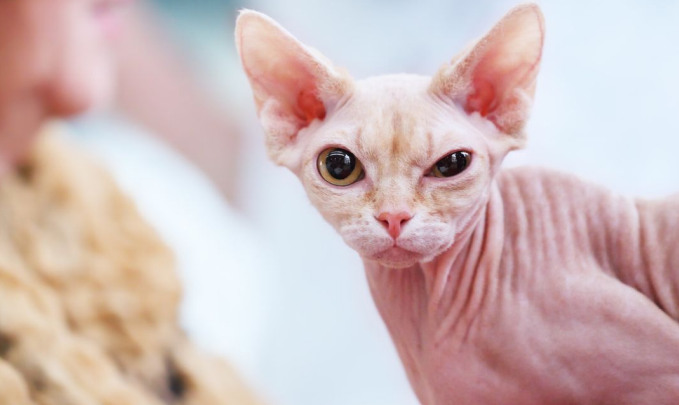
Some cats come this way. It’s not an accident—it’s breeding. Certain lines were designed for their skin, coat, or look. Whiskers were sacrificed along the way.
Some hairless breeds:
● Let’s talk Sphynx first. Probably the most famous whisker-free cat. No fur, no whiskers, no insulation. Occasionally, they’ll have short stubs, but not much.
● Peterbalds vary a lot. Bald ones = no whiskers. Flocked = maybe a few. Brushed = possibly curly, but super fragile.
● Donskoy? Born fuzzy, go bald. Some start with whiskers and lose them over time. Weird, right?
Some curly-coated breeds have whiskers, but they’re... compromised. Think broken springs.
● LaPerms have tight spirals that sometimes curl back onto their faces. Not ideal for sensing anything.
● Devon Rex? Short, brittle whiskers. They often snap off early. You’ll rarely see a full set.
● Cornish Rex follows the same pattern: short, sparse, breakable. Form over function.
It all ties back to genes. Hairless or curly coat mutations impact whisker development, too. You can’t separate the two.
Things that mess with whiskers:
● Recessive genes killing follicle growth
● Dominant mutations messing up structure
● Hair texture genes that break shafts
● The environment interacting with bad genetics
Breeders lean into this. It’s part of the plan—not a mistake.
We can't grow new whiskers, but tech can fill the gap. If you’ve got a whiskerless cat, you need extra help to keep them safe and confident. Start with smart cameras. Ones that let you watch how they move, where they stumble, what corners they hate. Some even let you talk to them when they look lost.
Want more? Try this combo: WOpet Heritage View Automatic Pet Feeder. It feeds and watches at the same time. You get a video plus a remote control. And that matters.
Feeding’s another pain point. Whiskerless cats struggle to line up their face to a bowl. Food spills. Water misses. Some stop eating altogether.
Smart feeders help by:
● Timing meals
● Controlling portions
● Removing guesswork
You get to see it all from your phone—every skipped meal, every awkward nudge. It’s not just food—it’s insight.
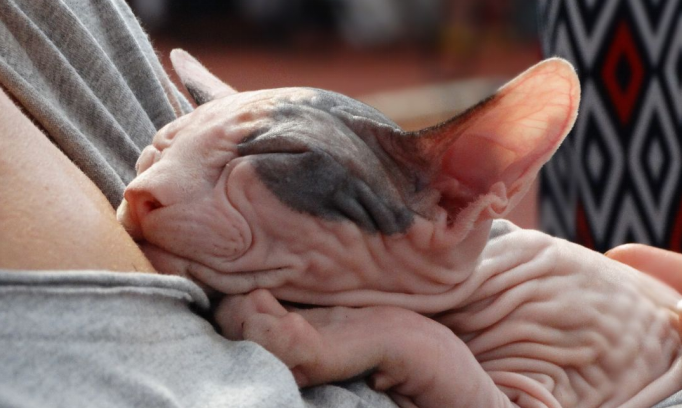
Caring for a whiskerless cat isn’t about being gentle—it’s about being precise. You’ve got to lock into their rhythm. Stick to routines. Watch every tiny shift. These cats don’t guess—they rely on consistency, not luck. To make things easier on them (and on you), here’s how to tweak their world without overcomplicating it:
● Don’t move the furniture: Cats without whiskers build mental maps from experience, not feelers. If you start shuffling things around, they’ll stumble. Literally. Keep layouts steady—they depend on knowing what’s where.
● Forget deep bowls, stick with wide and low: Elevated or narrow bowls confuse their aim. Flat, shallow dishes give them better access. No need to make eating harder than it already is.
● Soft lighting works better than shadows and glare: You’re not lighting a showroom. Hallways, corners, spots near their food? Keep it gentle. Harsh lighting messes with their limited input.
● Close off tight gaps and weird crawl spaces: They don’t always know what they can fit through. Block off tight spots. Save them (and yourself) from the whole stuck-cat saga.
● Mark their zones with texture, not guesswork: A rough mat. A rigid rug. Place them near litter, food, and rest areas. Texture cues through their paws help them find their way without thinking twice.
● Keep the floors clean—visually and physically: Less clutter = more confidence. That includes random shoes, boxes, toys, or anything sharp at floor level. Open floors help cats move without hesitation.
● Let them hear you before you touch them: Don’t sneak up. Say their name, make a soft sound. Give them a second to process it. Surprises don’t go over well when the radar’s broken.
● Pick toys they can follow with more than their eyes: No lasers. No flailing plush snakes. Try crinkle sounds, slow movement, or scented toys. Things they can track without full vision or feelers.
● Keep play short, not frantic: These cats tire quickly, mentally. A few minutes of focused play is plenty. Watch for signs they’re pulling back or zoning out.
● Build a spot where they can disappear without vanishing: Soft sides. Covered top. No visual overload. Give them space where they can relax, reset, and not feel like they’re on edge all the time.
These cats don’t need pity—they need support. When you understand their reality, you can adapt your home and tech to work for them. They can absolutely live full, rich lives. The trick? Don’t treat it like missing hair. Treat it like missing a tool. Because it is.
Routines matter. Smart monitors help. Consistent layouts reduce stress. And when things shift emotionally or physically, you’ll catch it early if you’re paying attention. With smart feeders and pet cams, you create stability. You give them back some control. No, it doesn’t replace whiskers—but it does ease the burden.
WOpet’s smart care tools offer that bridge between challenge and comfort, between lost instincts and guided independence. And sometimes, that’s all a whiskerless cat needs to thrive.
Label:
Popular Post

What to Feed a Sick Dog With No Appetite? [2025 Guide]
May 16, 2023
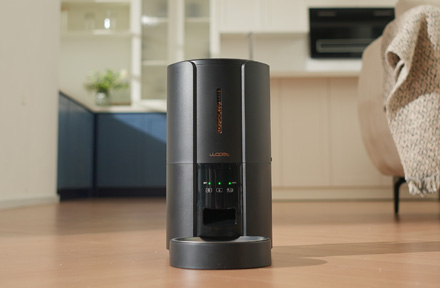
Troubleshooting Common Issues with Automatic Pet Feeders: Tips & Tricks for Pet Owners
Oct 26, 2023
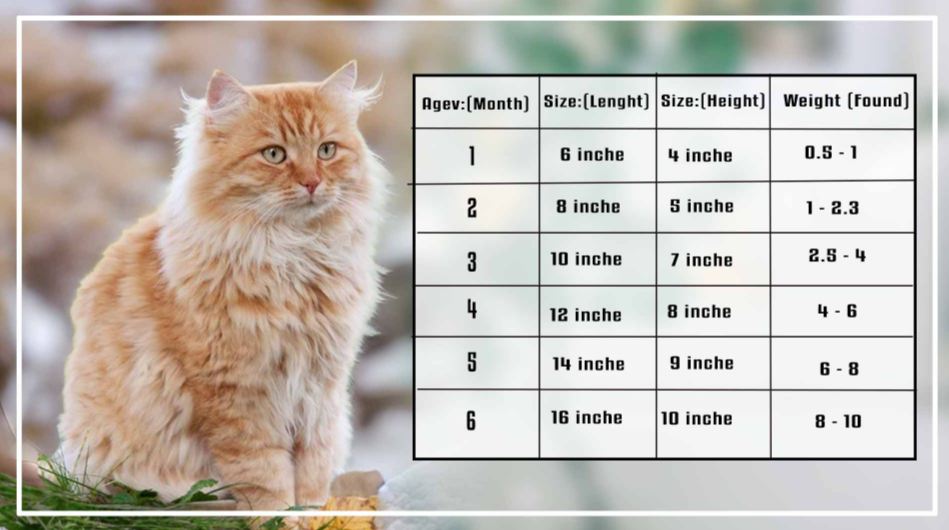
What is a standard Cat Weight chart by age Kg?
Mar 19, 2025
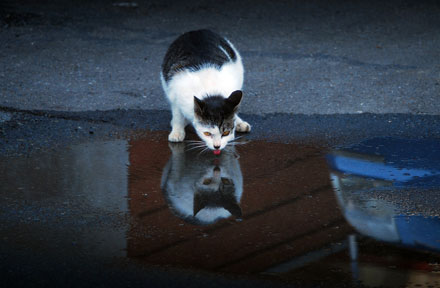
Why Does My Cat Cough After Drinking Water? 8 Potential Reasons
Mar 13, 2023
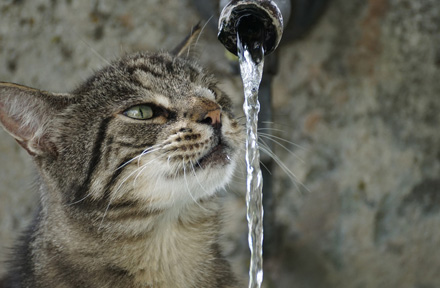
Why is My Cat Throwing up Water? Top 5 Causes Here
Feb 08, 2023
$109.99
$129.99
Copyright © 2025 WOPET. All Rights Reserved.